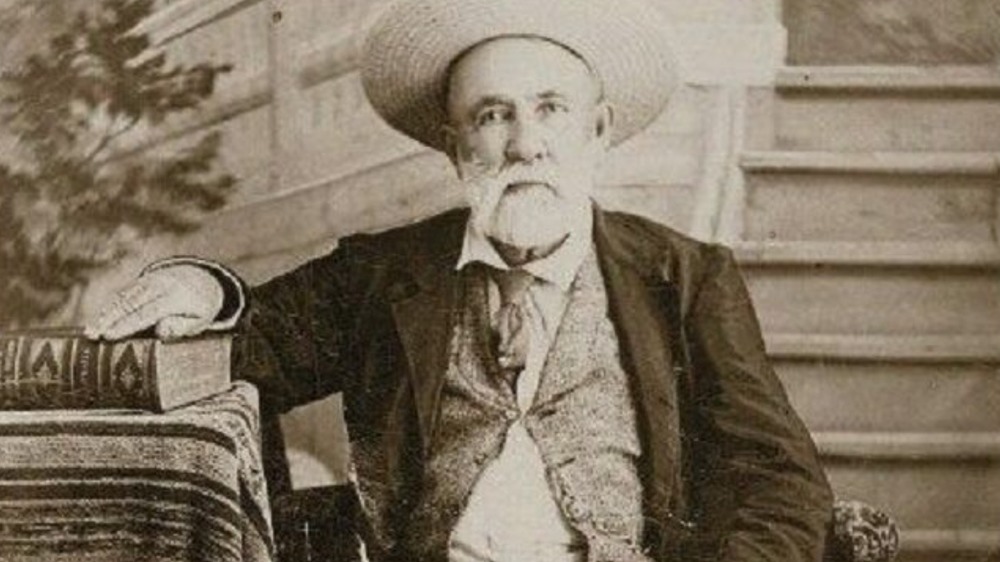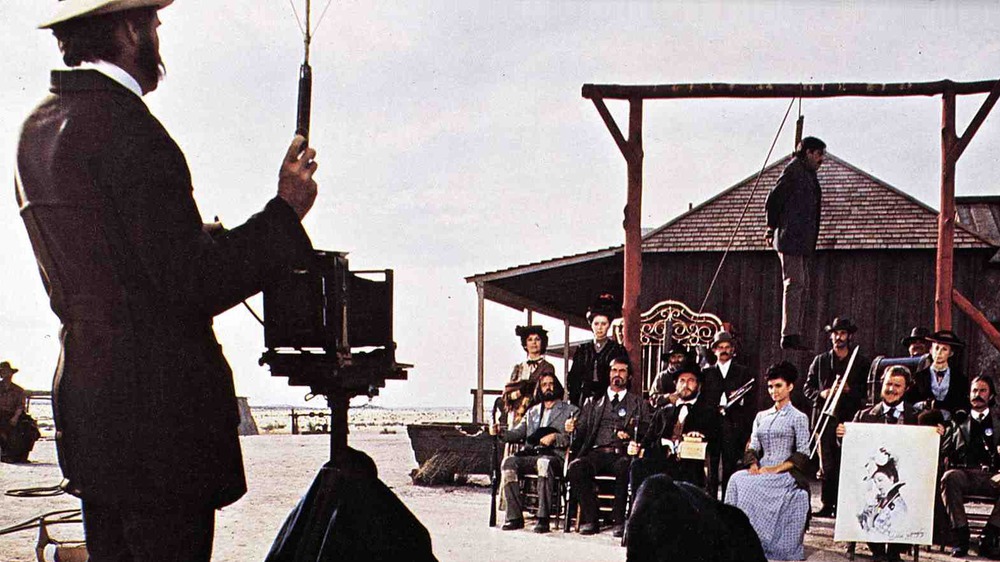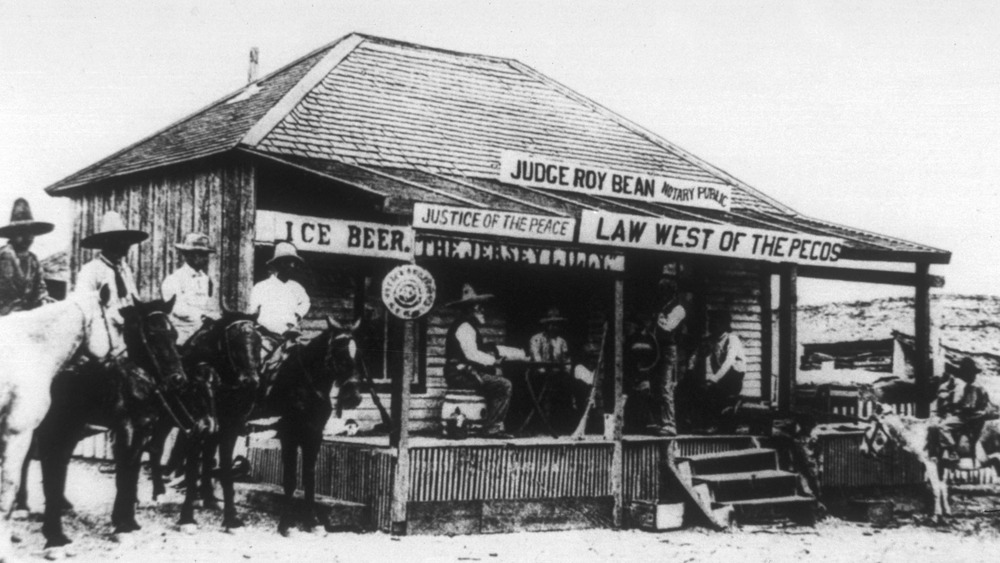Judge Roy Bean: The Texas Hanging Judge Who Never Hanged Anybody
Known for his unorthodox and often humorous courtroom manner and sentencing, Judge Roy Bean was basically a character out of a Cormac McCarthy novel. According to All That's Interesting, the kooky Texas lawman was born sometime in the 1820s in Kentucky, and in 1847 he moved to Mexico with his brothers. The pugnacious Bean brothers saw their share of brawls, and Roy was forced to flee the country after he shot a man in a bar. He went to California, where he kept at it, and ended up having to skedaddle out of San Diego because he shot and killed some other people. (His brother Joshua turned out to be a more upstanding San Diegan: he was the city's first mayor.)
Roy headed north to Los Angeles, where he got into the exact same kind of trouble, shooting and killing a Mexican military officer in a quarrel over a woman. Per History.com, the officer's friends hanged Bean to avenge the murder, but the rope was too long and he was able to survive on his tiptoes long enough for the woman to cut him down. Bean walked away from the incident, but he bore the scars from the rope around his neck for the rest of his life. Having finally had enough of his rowdy ways, he went east to settle down in New Mexico and Texas.
Judge Roy Bean was a successful businessman before becoming a West Texas judge
Judge Roy Bean spent about 16 years as a businessman in San Antonio, Texas. He wasn't the most scrupulous entrepreneur, but at least he'd stopped shooting people. According to Texas Escapes, he made a good living selling milk, and the enterprising vendor had an ingenious way of increasing his profits. He added creek water to it in order to have more to sell, and when his buyers complained about finding minnows in their milk, he put on a show of acting as surprised as they were. "By Gobs, I'll have to stop them cows from drinking out of the creek," he apparently said.
After he'd made some money in San Antonio, he headed west in 1882 to profit off the expansion of the railroad out to El Paso. He first went to a town named Vinegaroon — named after one of the gnarliest scorpions you've ever seen — where he sold booze to railroad workers out of a tent. Judge Roy Bean then moved to the nearby town of Langtry, where he opened a saloon called the Jersey Lilly, after an English actress named Lillie Langtry. Texas Escapes believes the town of Langtry was most likely named after a railroad civil engineer, but the locals preferred to believe that Bean named it after the object of his schoolboy crush. He was appointed Justice of the Peace of what was then Pecos County and began to mete out his quirky brand of justice.
Judge Roy Bean was the 'Law West of the Pecos' River
Judge Roy Bean put a sign up over his saloon proclaiming that he was the "Law West of the Pecos" and quickly made a name for himself as an unconventional magistrate. He once fined a dead man $40 for carrying a concealed weapon, which as luck would have it was exactly how much was in the dead man's pockets. (He used the money to bury the man and pay the gravedigger, but kept the man's gun for his gavel.) He threatened to hang one lawyer for using profane language when the attorney referred to his client's "habeas corpus." And in an incident that's not so much amusing but rather jaw-droppingly racist, he once let a man off for murder because the victim was a Chinese railroad worker and Bean was unaware of any law making it illegal "to kill a Chinaman."
Bean often staged hangings to scare criminals, and the practice was said to reduce recidivism in his county. But despite his reputation as a "hanging judge," he never actually hanged anyone. Judge Roy Bean didn't even send offenders to prison, preferring to have them work their debt to society through community service. Roy Bean died in San Antonio on March 16, 1903, just ten months before his sweetheart Lillie Langtry made a visit to the town everyone said he'd named in her honor. A wooden roller coaster at Six Flags Over Texas — the Judge Roy Scream — is named after him.


